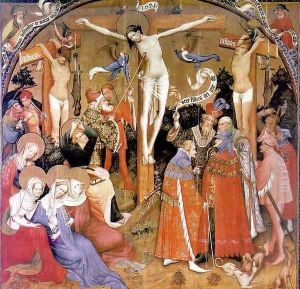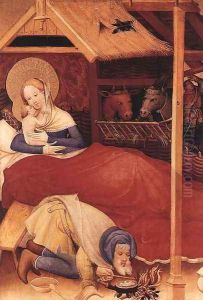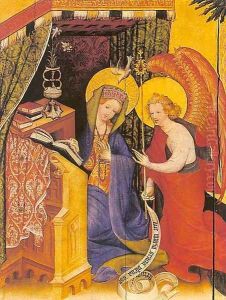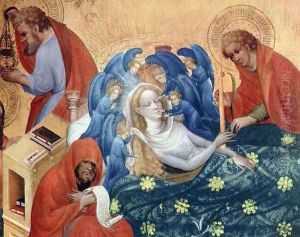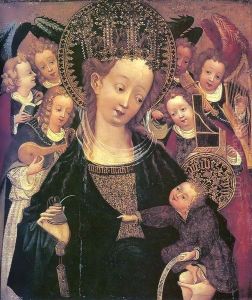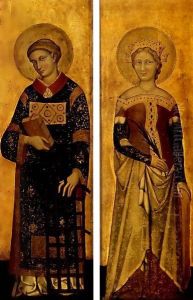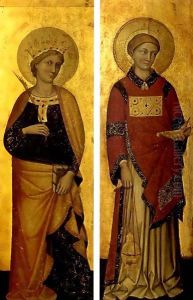Konrad von Soest Paintings
Konrad von Soest, also known as Conrad von Soest, was a pivotal figure in the transition from medieval to early modern Northern European painting. Born around 1370 in Westphalia, in the Holy Roman Empire (present-day Germany), little is known about his early life and training. However, his works signify a deep understanding of the International Gothic style, combined with innovative approaches to spatial representation and narrative, heralding the upcoming Northern Renaissance. Konrad von Soest's career is best documented from the late 14th century until the early 15th century, during which he significantly influenced the development of panel painting in Northern Europe.
Konrad's most renowned work is the 'Niederwildungen Altarpiece' (also known as the Altarpiece of Bad Wildungen), completed in 1403 for the church of St. Mary in the city of Bad Wildungen. This altarpiece is celebrated for its detailed depiction of religious scenes, combined with a remarkable sensitivity to naturalistic detail and a sophisticated use of color. His ability to convey narrative and emotion through facial expressions and gestures was particularly advanced for his time, making his figures appear more lifelike and accessible.
Another significant contribution of Konrad von Soest is the 'Marian Altarpiece' in the Marienkirche in Dortmund, dated around 1420. This work further exemplifies his skill in creating spatial depth and his delicate handling of light and shadow, which would become hallmarks of Northern Renaissance art. His paintings also include secular themes and portraits, which are among the earliest examples of Northern European panel painting to incorporate these elements, indicating a shift in art towards more human-centered subjects.
Konrad von Soest's influence extended beyond his immediate geographical region, impacting the development of the Northern Renaissance through his innovative approaches to composition, perspective, and portrayal of the human figure. Despite the scarcity of documented details about his life, his surviving works provide valuable insights into the evolution of European art at the dawn of the 15th century. His legacy is that of a pioneer who bridged the medieval and early modern periods, setting the stage for the flourishing of Northern European art in the centuries that followed. His death is recorded after 1422, but the exact date and circumstances of his passing remain unknown.
